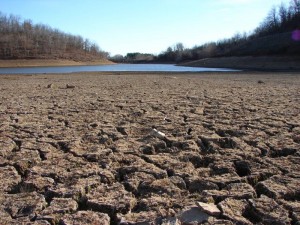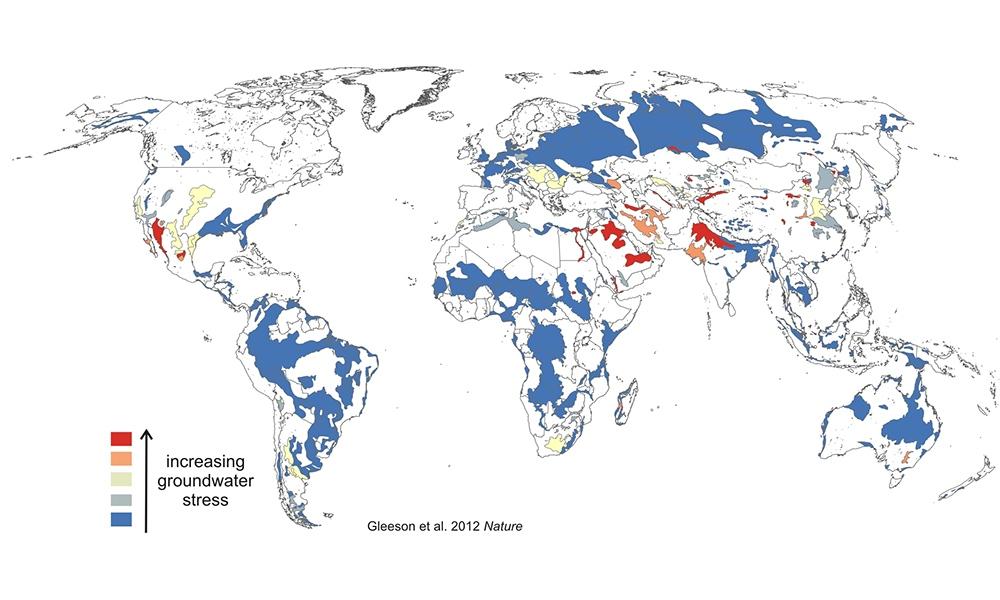The Worry Over Water
Aug 16th, 2012 | By admin | Category: Water IssuesBy Suzanne York, www.howmany.org
It’s pretty obvious that summer 2012 has been one of the hottest summers in decades in the U.S., even after much of the country endured a scorching 2011. Last year Dallas,Texas had had 40 consecutive days over 100 degrees, and Oklahoma had 63 days with 100+ degree highs. This year has seen much of the same, as July was the warmest single month on record for the continental U.S. And summer isn’t over yet.
Throughout much of the Midwest, drought conditions are stressing the corn crop that underlies much of our food and domestic energy supply. In California, though this isn’t an “official” drought year, water is in short supply almost every year. Representatives for agricultural, environmental, municipal and developer groups fight never-ending political battles for adequate water sources to get through the long dry season. Last month, Governor Jerry Brown announced his support for a new plan to send water from the Sacramento River to the southern part of the state via two huge tunnels to satisfy growing residential and agricultural demand.
Water is the world’s most precious resource. A recent study on global groundwater depletion, published in the journal Nature, should make us all take notice. This study concluded that almost one-quarter of the world’s population lives in regions where groundwater – one of the planet’s main sources of fresh water – is being used up faster than it can be replenished. That is nearly 1.7 billion people. Most worryingly, 20% of the world’s aquifers are being overexploited.
This is occurring in some of the world’s major agricultural regions, including the Central Valley in California, the Nile delta region of Egypt, and the Upper Ganges in India and Pakistan, as demand exceeds these reservoirs’ capacity for renewal. Many of these regions will experience high population growth in the coming years – by 2050 India is predicted to have 1.6 billion people and Pakistan 314 million. Even California is projected to surpass 50 million residents by 2048.
The researchers mapped a “groundwater footprint” for nearly 800 aquifers worldwide, assessing groundwater withdrawals versus natural replenishment rates of the aquifers. According to Tom Gleeson, lead author of the study and a hydrogeologist at McGill University in Montreal, the groundwater footprint for the Upper Ganges aquifer is more than 50 times the size of its aquifer, “so the rate of extraction is quite unsustainable there”.
Author and water expert Sandra Postel, writing for National Geographic, said that the handful of countries that are depleting the most groundwater, namely the U.S., India and China, are also among the world’s top food producers. She recently wrote about the consequences of groundwater depletion, noting that “Saudi Arabia has substantially depleted its own aquifers, and Saudi companies are now buying up land in Ethiopia and elsewhere to help ensure Saudi food security.”
A separate study from the University of California’s Center for Hydrologic Modeling in 2011 came to similar conclusions. And earlier this year yet another study, this one for the Proceedings of the National Academy of Sciences, found that the U.S. food supply may be vulnerable to rapid groundwater depletion from irrigated agriculture.
The state of California uses more groundwater than any other state in the U.S., and more than half of Californians rely on groundwater as a source of drinking water; in some areas it is the only water source. Approximately 30 percent of California’s total water supply comes from groundwater in a normal year; during drought years it can be up to 60 percent.
Given the existing stresses on water supply, California should proceed carefully when it comes to public policies regarding demand for water. A water tunnel might bring relief, though possibly at a high price for the Delta ecosystem. We also need water conservation and policies that support drip irrigation, rainwater harvesting, wastewater treatment, groundwater pumping limits, switching to water efficient crops, and local water users associations.
Tapping into local knowledge can also bring about water saving solutions. In India, in the desert communities of Rajasthan, people are implementing a traditional way of harvesting and storing rain water. Using taankas, or underground water storage tanks, GRAVIS, a Rajasthani organization, helped 20 villages construct these tanks that resulted in vastly improved water security during times of drought. Each taanka holds 20,000 liters of water and can last a family for 5-6 months. It has also eased the water burden on women and allowed more girls to be freed from the burden of fetching water long-distances and attend school.
The demand for fresh water is only going to increase in the coming years. Conservation efforts, efficiency, innovative ideas, and best practices (old and new) will have to be implemented and shared worldwide.
Suzanne York is a senior writer with the Institute for Population Studies/HowMany.org


